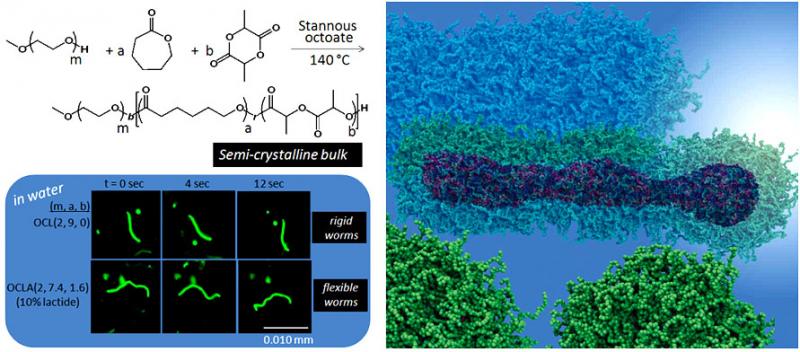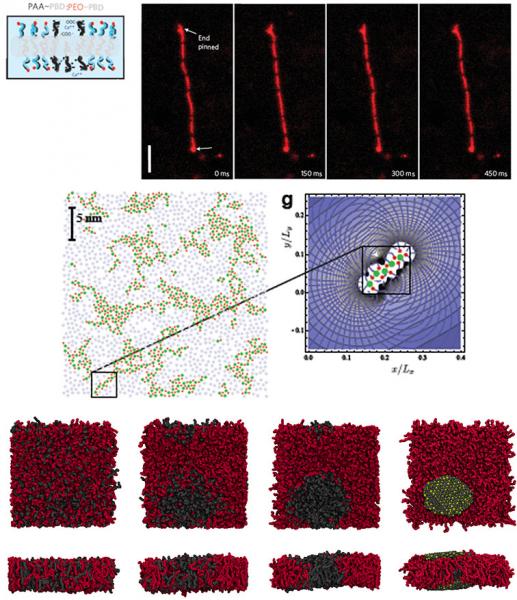 Design & engineering of modern devices increasingly requires complex nano- and micro-structures. One area of research now showing promise for creating such structures through simple solution techniques involves the assembly of amphiphilic molecules, i.e., molecules containing both oily and water-loving parts. Structures formed include cylinder-shaped micelles & cell mimetic membranes. By mixing together anionic and neutral polymer amphiphiles with divalent cations such as calcium, domains can be made within these assemblies. Various levels of simulation and calculations elucidate their properties as well as mechanisms of domain formation.
Design & engineering of modern devices increasingly requires complex nano- and micro-structures. One area of research now showing promise for creating such structures through simple solution techniques involves the assembly of amphiphilic molecules, i.e., molecules containing both oily and water-loving parts. Structures formed include cylinder-shaped micelles & cell mimetic membranes. By mixing together anionic and neutral polymer amphiphiles with divalent cations such as calcium, domains can be made within these assemblies. Various levels of simulation and calculations elucidate their properties as well as mechanisms of domain formation.
The crystallization processes are sensitive to conditions such as curvature in the assemblies. For example, a crystallizable chain within a block copolymer amphiphile couples curvature to crystallization and thereby impacts rigidity & the shape of an assembly. We address these issues with simple, novel block copolymers that self-assemble in water to aggregates whose dynamics can be visualized and characterized by optical microscopy.

